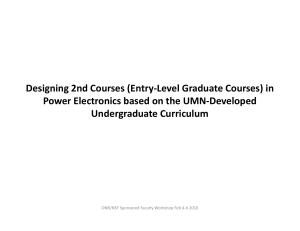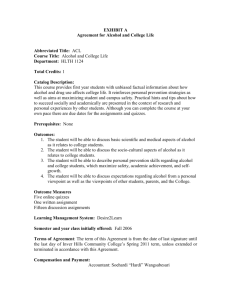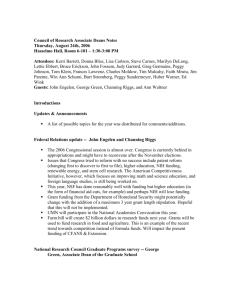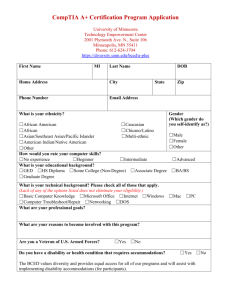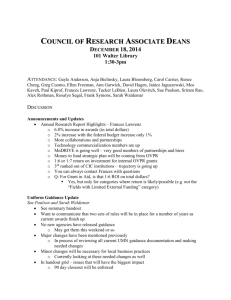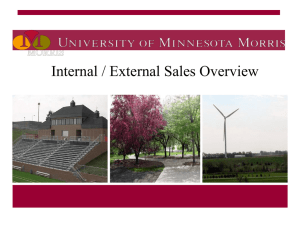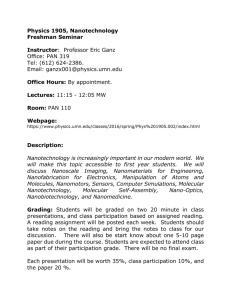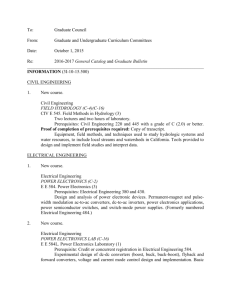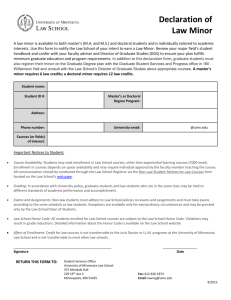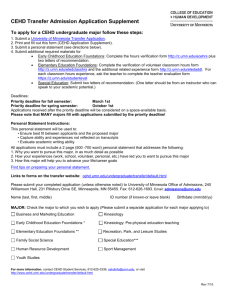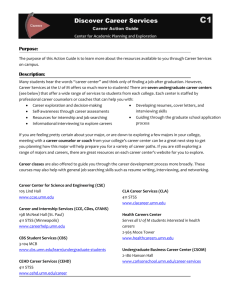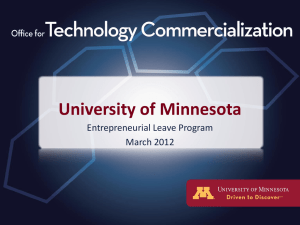Ned Mohan
advertisement
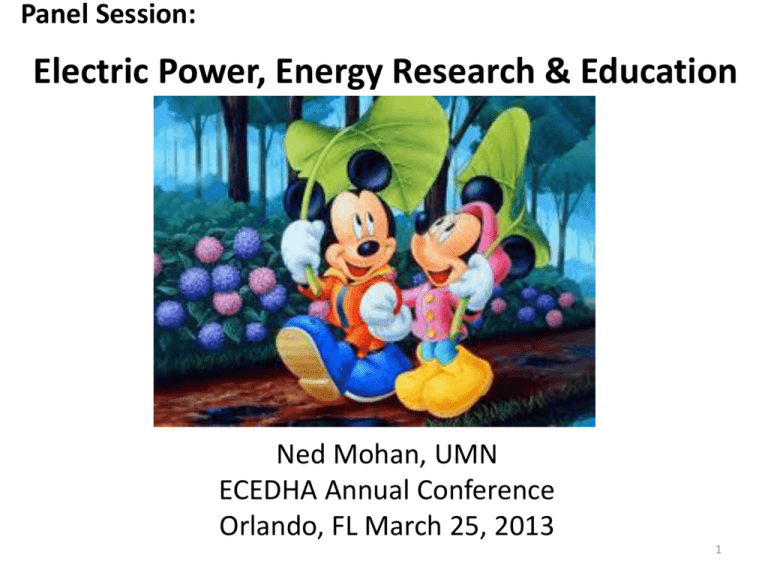
Panel Session: Electric Power, Energy Research & Education Ned Mohan, UMN ECEDHA Annual Conference Orlando, FL March 25, 2013 1 2 2 Mission: Enable all universities to Provide a firstrate education and Graduate students in large numbers Procedure: Develop and disseminate a Complete Curriculum in Electric Energy Education 3 www.CUSP.umn.edu Courses on CUSP™ Undergraduate: 1. Power Electronics and Lab 2. Power Systems and Lab 3. Electric Machines and Drives; Lab Graduate: 1. 2. 3. 4. 5. 6. 7. 8. 9. 10. Graduate Course on Power Electronics (collaborative effort) Graduate Course on Power Systems (collaborative effort) HVDC Transmission Systems (Ani Gole) Electric Machines and Drives: Modeling and Control (Ned Mohan) Power Generation, Operation and Control (Bruce Wollenberg) Designing Electric Machines (Jim Hendershot) Power System Protection (Pratap Mysore) Wind Energy Essentials (collaborative effort) Electricity Markets (Ross Baldick) Synchrophasors (Prof. Phadke and team) 5 Graduate Course(s) on Power Electronics 1. Full-bridge DC-DC Conv; Soft-Switching – H Krishnaswami (UT) 2. Front-End Rectifiers – Kaushik Basu (UMN) 3. Resonant Converters – Ned Mohan (UMN) 4. Dual Active Bridge – Amit Jain (Intel) 5. Matrix Converters - Kaushik Basu (UMN) 6. Multi-Level Converters – Prasad Enjeti (TAMU) 7. Energy-Efficient Lighting: CFL, LED, IGBT – Eric Persson (IRF) 8. Applications in Automotive Systems – K. Rajashekara (UT-Dallas) 9. Photovoltaic Systems – Robert Balog (TAMU) 10. High Power Applications in Power Systems – Ned Mohan(UMN) 11. Semiconductor Device Physics – Bill Robbins (UMN) 12. Wide Bandgap Devices – Anant Agrawal (CREE) 13. Magnetic Design – Bill Robbins (UMN) 14. Thermal Design – Bill Robbins (University of Minnesota) 15. EMI and EMC – Chris Henze (Analog Power Design Inc.) Blended/Flipped-Classroom Pedagogy • Procedure: – Pre-class: watch a 15-minute module (5%) – During-class: real-world, designoriented problems (15%) – Post-class: homework problems (15%) 7 Content of Each Course: 1. Video clips for each lecture: 2. Textbook (Reference Material) 3. In-class discussion problems 4. Labs 5. Homework Problems 8 “Nationwide Implementation and Assessment of an Undergraduate FlippedClassroom Teaching Model in STEM” A Proposal Submitted to NSF with 59 Universities Collaborating 9 Uniqueness of Our Approach • Force Multiplier: – Aimed at faculty to provide all the resources that are needed – Teaching the Teachers! • Archiving Institutional Knowledge: – Reaching out to best experts in the world • Evolving to keep them Current: – Consortium of 168 Universities 10 Increasing Student Enrollments 140 112 students 120 Enrollment 100 80 PE PS 60 ED 40 33 students 20 0 1999 2000 2001 2002 2003 2004 2005 2006 2007 2008 2009 2010 2011 Year 11 NAU Power Engineering = UMN Southwest, Sponsored by Fall 2007 Final Enrollment 13 Fall 2008 18 Spring 2010 31 Fall 2011 24 Fall 2010 22 Spring 2013 39 Spring 2012 28 Course Term EE401/490: Power Systems Senior technical elective (3 credits lecture) EE484: Power Electronics Senior technical elective (3 credits: 2 lecture, 1 lab) EE490: Electric Drives Senior technical elective (3 credits: 2 lecture, 1 lab) Increasing NAU EE enrollment: AY6-7 AY7-8 AY8-9 128 147 157 AY9-10 AY10-11 AY11-12 AY12-13 171 219 211 227 Certificates for Practicing Engineers • Content of courses free-of-charge • Certificates • All the material developed • Online Homework • Proctored Online Exams • Credible 13 Synergy Between Research & Education Research Focus: Integrating Power Electronics into Power Systems for Sustainability PhDs: 2011: Jalpa Shah, Rashmi Prasad, Nathan Weise 2012: Shabari Nath, Apurva Somani, Kaushik Basu Current PhD-Track Students: 14 (including an NSF Graduate Research Fellowship and DoD NDSEG Fellowship) 14 Summary • CUSP™ is resulting in large enrollments and quality education • Certificates for Practicing Engineers • Synergy between Research & Education 15 Nationwide Dissemination through ONR/NSF Funding Next WorkshopFebruary 6-9, 2014 Napa, CA 16
